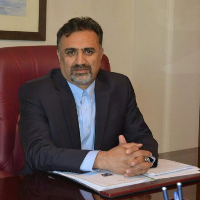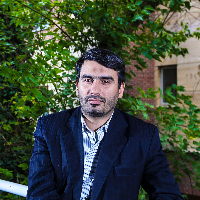Conceptual Refining and Solutions (Strategies) Description and Substantiation Indicators of Four Principles of Mosque based, Neighborhood based, Introversion and Naturalism in Iranian-Islamic City
Human beings have always been in an interaction with Nature in accordance with their own ideology and the interface between them has become a rich source of inspiration for most studies. The impact of human beings on Nature is anchored in the ideology or philosophy of life The ideology has exerted so powerful influence that some people believe a typical Islamic city is grounded on and is physical manifestation of the Islamic philosophies and the merely way to be familiar with the ecology of Islamic cities is to comprehend its principles and laws. In that connection, the way the cities in human civilization formed and constructed have always embodied the ideology reigned over those societies as a result, it is not surprising that in the geographical heterogeneous environments, cities with assorted roles, different levels of significance, and with uncoordinated and disparate development have been formed.
Over the past decades, the attention towards the requisite revival of Islamic values in Muslim cities, or at least the awareness of the fact that Muslim complexes which had their own specific identity in the past have lost their identity nowadays has been augmented. In Iran with the advent of Islamic revolution, whose Islamic features have made its cultural characteristics outstanding, and with the awakening of other Islamic nations, the hope for constructing complexes based on the Islamic principles, values, and philosophies has boosted.
The Iranian Islamic urban Planning and Design should be grounded in the theoretical basics and theories pertaining to the principles and values which are required to be employed in the design, planning, and the development of a life environment suitable for Muslims and to reign over Human's relationship with the environment (natural and artificial environments) and the interaction of Human's beings with each other. These principles and values will be derived from the Islamic instructions, and likewise they encompass prominent aspects of national culture, those of which do not go against the Islamic instructions. It is worth briefly noting that the primary sources of principles governing all Muslims’ deeds, including their urbanization, are the Holy Quran and traditions of the prophet Muhammad.
The meaning, concept, and essence of the elements and characteristics that form Iranian-Islamic cities, the settlement of these elements, and their relationship with people’s habitations are grounded on numerous systems, such as consecration and consecrated urban elements including mosques, bathhouses, etc., trade corporations such as Trade and Business managers, urban administration systems and organizations, religious education systems, ‘shariat’ and Islamic rights, and symbolic systems of some cities.
Urban elements, architectural units, and Iranian-Islamic cities can be framed within several categories: Residential spaces, including single family houses, multi-family houses, joined single-family houses with open spaces and shared services, downtown caravanserais, and suburban caravanserais. Religious elements, including mosques, monasteries, religious schools, holy places of worship, sacred tombs and shrines, ‘Hosseiniyeh’ , ‘Tekyeh’ and covered and open consecrated spaces for lamentation and mourning ceremonies. Individual and cooperative business units, including the shopping plazas ‘Timcheh’, inns, ‘Qeisarieh’, shops, etc., and the spaces attached to them such as landing-places, warehouses, and stables. Production units, including trade-related workshops, factories and shops for the distribution of raw materials, and suburban workshops. Public Service Units, including libraries, cisterns, public bathhouses, cemeteries, coffee shops, tea houses, and restaurants. Public services and communication networks, for directions (avenues and streets, Bazaars, squares, alleys, paths, dead ends, for water supply and services (aqueducts, cisterns and curbs), and for sewage disposal and water supply through joined underground channels and culverts.
One of the Geographical spaces that always had reflected the ideology of the ruling systems is the phenomenon of the city. According this, the Iranian Islamic city should be a reflection of thoughts on Islam in all aspects. in order to manifest the Islamic values in the city construction, the identification of the values absolutely required that can and should demonstrate and assure the Iranian Islamic identity in an Islamic city are. The purpose of this study is to identify the values, principles and indicators of Iranian Islamic urbanism and Conceptual refining and implementation of the strategies that described them
So for this purpose, the study was conducted on the documents also Delphi technique was used in two stages in order to refine the components, criteria and sub-criteria. In early studies and from the perspective of experts, four principles of mosque-based, introversion, neighborhood-based and naturalism are the priorities that was considering as the most important and the basic principles of Iranian Islamic urbanism: so by refining their theoretical roots, the mosque-based index at 2 dimension, 7 criteria and 15 items, the naturalism index at 2 dimension, 8 criteria and 12 items, the introversion index at 2 dimension and 8 items and the neighborhood based index in 3 dimension, 7 criteria and 20 items were presented. This research in its realm was studied the Iranian Islamic city in the framework of common indicators in Islamic cities. Basic indicators could be based in all cities with the majority of Muslims. Hence, the context of this study does not mention the separation of Iranian and Islamic city and their definitions and concepts.
- حق عضویت دریافتی صرف حمایت از نشریات عضو و نگهداری، تکمیل و توسعه مگیران میشود.
- پرداخت حق اشتراک و دانلود مقالات اجازه بازنشر آن در سایر رسانههای چاپی و دیجیتال را به کاربر نمیدهد.



